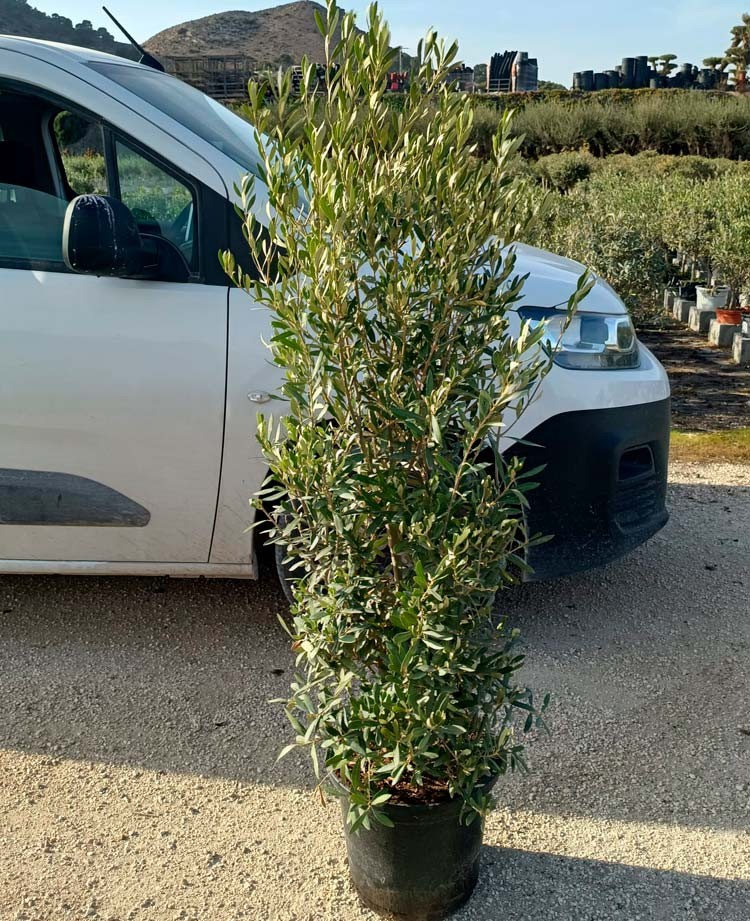



The olive tree is not just a tree, it is a true emblem of the Mediterranean. With its elegant presence, twisted trunk and silvery leaves, it has accompanied humanity for thousands of years. In addition to its importance in the production of olives and oil, it has also become one of the most desired plants to decorate gardens and terraces, bringing a rustic and timeless charm.
Total height with pot: 1.5 m
Pot size: 30 L
 Shipments to Spain and Portugal ...
Shipments to Spain and Portugal ...
The cost of transportation depends on the province or country.
“The olive tree, a symbol of life and tradition that you can now have in your home.”
Main characteristics
· Scientific name: Olea europaea
· Origin: Mediterranean basin
· Type: Evergreen tree
· Height: Can exceed 10 meters in the ground, but is also cultivated in pots in smaller versions.
· Leaves: Elongated, green on the upper side and silvery underneath.
· Flowering: In spring, with small, very discreet white flowers.
· Fruit: The olive, of great gastronomic value.
Cultivation and care
· Light: Needs full sun, it loves brightness and warmth.
· Watering: Moderate. Very drought-resistant, so allow soil to dry between waterings. Avoid waterlogging.
· Soil: Prefers well-drained soils, even poor and stony ones. In pots, use universal substrate with good drainage.
· Temperature: Tolerates intense heat and moderate cold, but should not be exposed to prolonged frosts.
· Pruning: Carried out to maintain shape and ventilate the canopy.
· Fertilization: In spring and summer, apply fertilizer rich in potassium to encourage flowering and fruiting.
Specific References